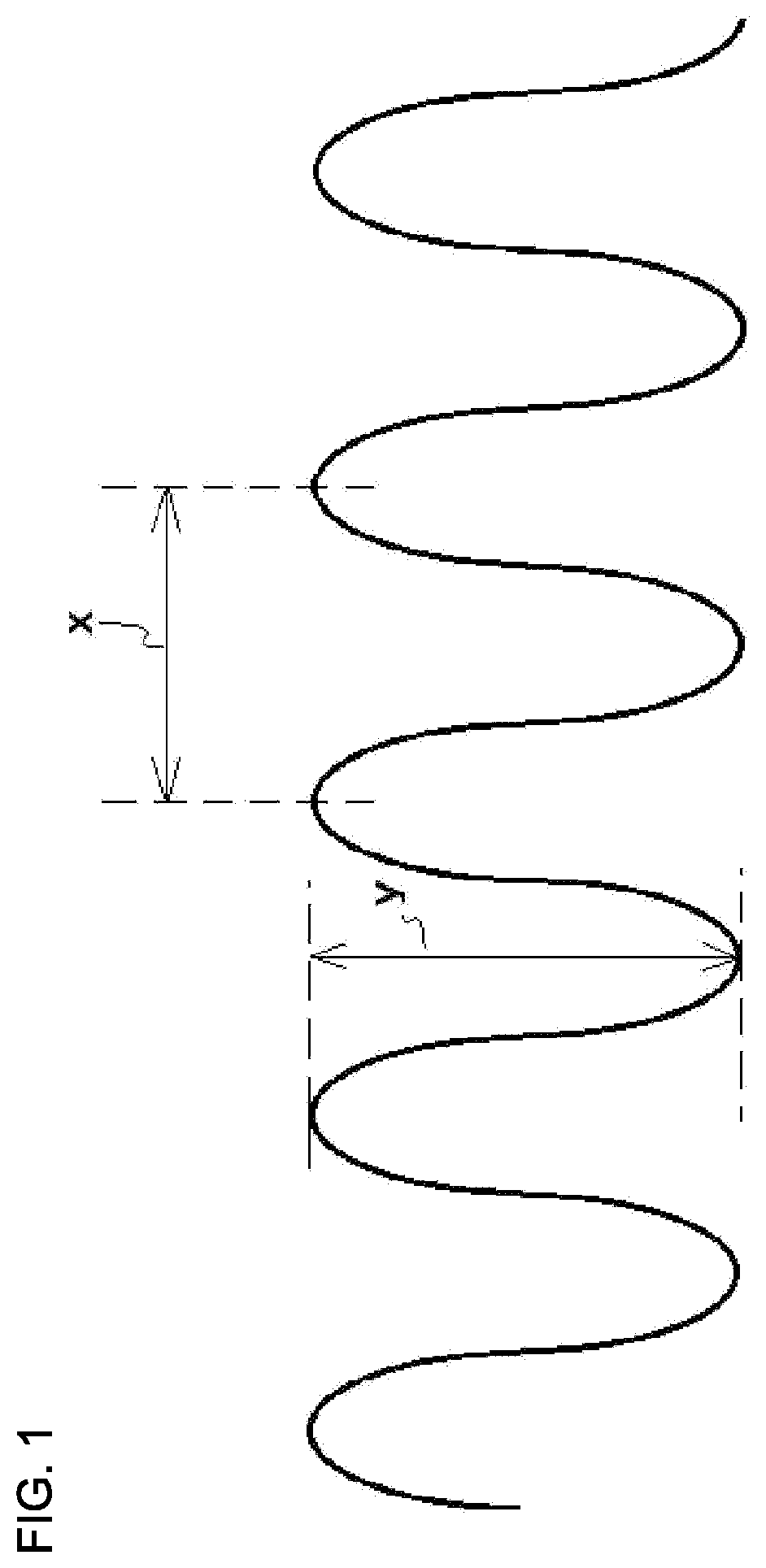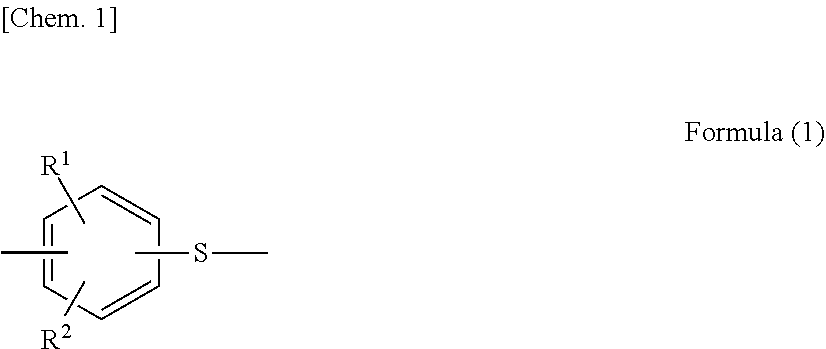Metal/resin composite structure and method for manufacturing same
- Summary
- Abstract
- Description
- Claims
- Application Information
AI Technical Summary
Benefits of technology
Problems solved by technology
Method used
Image
Examples
examples
[0080]The present invention will now be described in more detail with reference to specific examples. In addition, the parts and % are based on mass unless otherwise specified.
(Measurement Example 1) Measurement of Melt Viscosity of Polyphenylene Sulfide Resin
[0081]The melt viscosity of the polyphenylene sulfide resin produced in Reference Example was measured after holding the resin at 300° C., a load of 1.96×106 Pa, and L / D=10 (mm) / 1 (mm) for 6 minutes, using a flow tester, CFT-500D, manufactured by Shimadzu Corporation.
(Preparation Example 1) Preparation of Polyphenylene Sulfide Resin (A-1)
[Step 1]
[0082]To a 150-L autoclave equipped with a stirring blade and connected to a pressure gauge, a thermometer, a condenser, a decanter, and a rectifying column, 33.222 kg (226 moles) of p-dichlorobenzene (hereinafter abbreviated to “p-DCB”), 3.420 kg (34.5 moles) of NMP, 27.300 kg (230 moles on a NaSH basis) of a 47.23 mass % aqueous NaSH solution, and 18.533 g (228 moles on a NaOH basis) ...
examples 1 to 8
(Examples 1 to 8 and Comparative Examples 1 to 4) Preparation of Thermoplastic Resin Composition
[0090]Each material was uniformly mixed with a tumbler according to the composition components and blending amounts (all parts by mass) described in Tables 1 to 4. After that, the blended material was put into a vented twin-screw extruder “TEX30α” manufactured by The Japan Steel Works, Ltd., and the resin composition was melt-kneaded by setting a resin component discharge amount of 25 kg / hr, a screw rotation speed of 250 rpm, and a setting resin temperature of 330° C. to obtain pellets of the resin composition. The pellets were used to carryout the following various evaluation tests. The results of the tests and evaluations are shown in Tables 1 to 3.
(Measurement Example 2) Adhesion Strength
[0091]Test Method
[0092]The metal test piece (length×width×thickness=50 mm×10 mm×2 mm) subjected to the following roughening treatment was set in a mold for injection molding (mold temperature was 140° ...
PUM
| Property | Measurement | Unit |
|---|---|---|
| Percent by mass | aaaaa | aaaaa |
| Percent by mass | aaaaa | aaaaa |
| Softening point | aaaaa | aaaaa |
Abstract
Description
Claims
Application Information
 Login to View More
Login to View More - R&D
- Intellectual Property
- Life Sciences
- Materials
- Tech Scout
- Unparalleled Data Quality
- Higher Quality Content
- 60% Fewer Hallucinations
Browse by: Latest US Patents, China's latest patents, Technical Efficacy Thesaurus, Application Domain, Technology Topic, Popular Technical Reports.
© 2025 PatSnap. All rights reserved.Legal|Privacy policy|Modern Slavery Act Transparency Statement|Sitemap|About US| Contact US: help@patsnap.com



